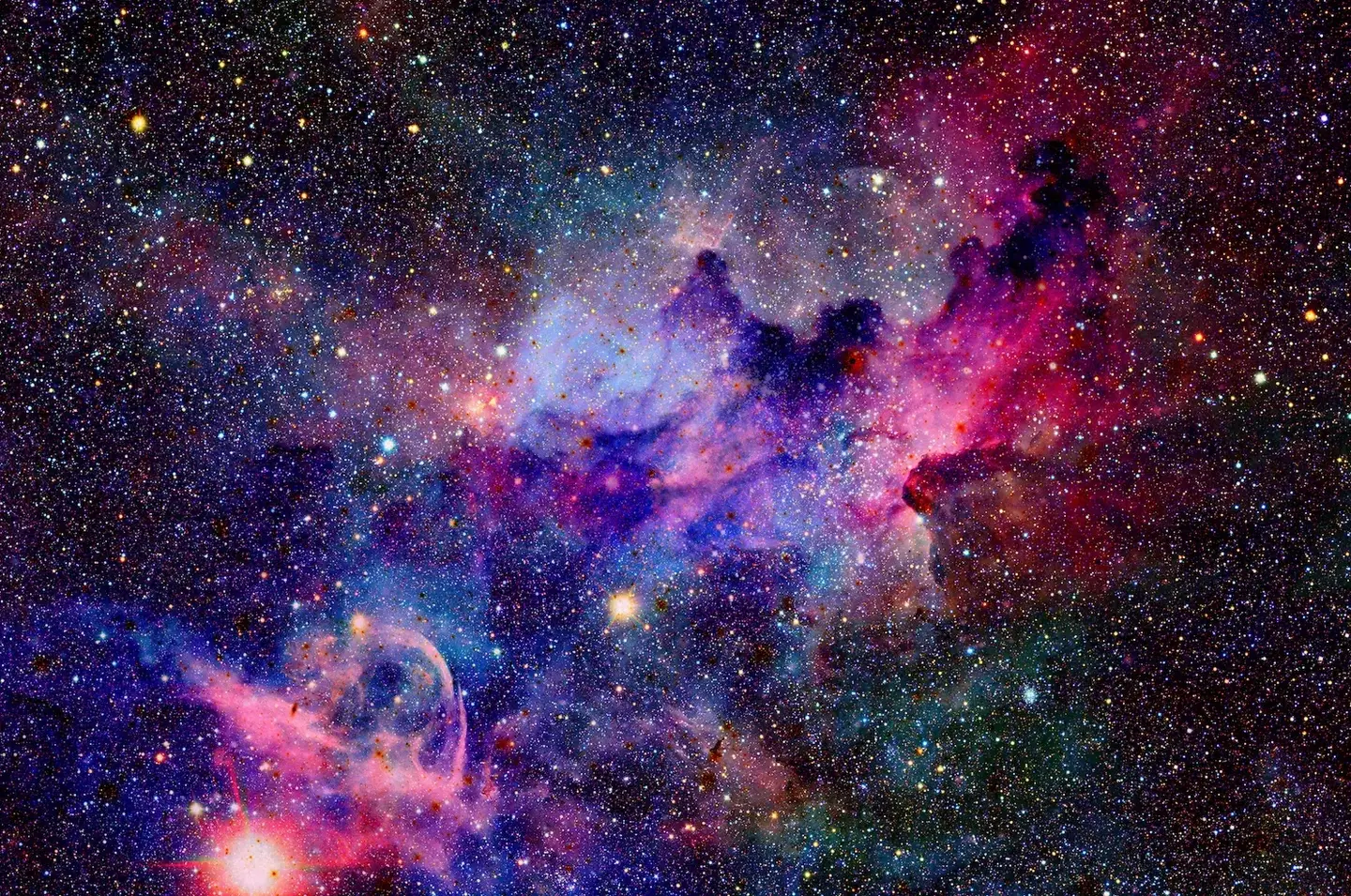In a major discovery, the James Webb Space Telescope has captured data that directly challenges our current understanding of the universe

The universe’s secrets are vast, but none has been as puzzling as the presence of ‘impossible early galaxies’. (CREDIT: NASA images)
In a groundbreaking discovery, the James Webb Space Telescope (JWST) has presented data that directly challenges our current understanding of the universe. For years, cosmologists have pegged the universe’s age at approximately 13.8 billion years. Yet, the new JWST findings suggest that this may be a vast underestimation. But how has one telescope managed to disrupt such a long-held belief?
According to existing models, these galaxies, emerging during the cosmic dawn, roughly 500 to 800 million years post-big bang, shouldn’t have evolved disks and bulges so quickly. “It’s akin to seeing a toddler with the wisdom of an octogenarian,” says a scientist, explaining the paradox.

Yet, there they are: young galaxies appearing as if they’ve undergone vast periods of evolution. Complicating the picture further, some smaller galaxies seem to have greater mass than their larger counterparts, going against conventional wisdom.
Unlocking the Redshift Puzzle
To understand the age of the universe, one must first grasp the concept of redshift in the light emitted by far-off galaxies. Much like the Doppler effect in sound, wherein noises from an approaching source seem higher-pitched and those from a receding source seem lower-pitched, light too experiences frequency shifts. In this context, a redshift indicates a celestial body moving away from us. The more distant the galaxy, the more pronounced this redshift becomes.
Historically, a hypothesis known as the ‘tired light’ theory suggested that light loses energy during its long cosmic journeys, leading to the redshift. However, as it failed to explain numerous observations, this theory was largely dismissed.
Expansion: The Key to the Universe’s Age
The real game-changer in understanding redshift was the realization of the Doppler effect’s role in it. Distinct galaxies moving away from us at velocities directly proportional to their distance hinted at a universe constantly expanding.
This understanding was solidified in 1964, when Arno Penzias and Robert Wilson of Bell Labs stumbled upon the cosmic microwave background radiation—a discovery that further discredited the ‘steady-state’ model and gave credence to the expanding universe theory.

The universe’s age largely hinges on its rate of expansion. Data from the 1990s’ Hubble Space Telescope launch saw estimates ranging from 7 billion to 20 billion years. It was only later that a consensus was reached, placing the age at 13.8 billion years.
Challenging the Status Quo
While previous studies have attempted to address the enigma of ‘impossible galaxies’ using the ‘tired light’ model, they’ve been largely unsuccessful, often falling short in explaining other cosmic phenomena like supernovae redshifts.
“I attempted to marry the conventional big-bang model with the tired light theory, hoping to account for both supernovae and JWST data. While this expanded our universe’s age to 19.3 billion years, it couldn’t entirely account for the JWST data,” says Rajendra Gupta from the University of Ottawa.

However, combining the tired light theory with an evolving cosmological model based on the evolving coupling constants (proposed by British physicist Paul Dirac in 1937) yielded better results. This new hybrid model both accounted for the JWST’s observations and bumped the universe’s age to a staggering 26.7 billion years.
Historical Context: A Meeting of Models
The technique of blending models isn’t novel. Historically, light was thought to propagate as particles, as suggested by Sir Isaac Newton.
This theory persisted until the 19th century when the wave theory of light emerged, explaining diffraction patterns more effectively. Albert Einstein later revived the particle-like nature of light, revealing that light could demonstrate both particle and wave characteristics.

In another approach, estimating the universe’s age involves analyzing the oldest stars in our galaxy’s globular clusters, assuming that all galaxies initiated formation simultaneously. Yet, some stars, like Methuselah, believed to be the galaxy’s oldest, defy this with their computed age surpassing the universally accepted 13.8 billion years.
Reimagining the Universe
Although the Hubble Space Telescope had already hinted at the ‘impossible early galaxy’ conundrum, the JWST’s launch in December 2021 fortified these claims.
As the JWST data continues to challenge the cosmological status quo, the scientific community is leaning towards embracing new physics. While these findings have shaken foundational beliefs, they also promise a future where our understanding of the universe is deeper and more nuanced than ever before.
Key Characteristics of the Cosmic Dawn:
The cosmic dawn refers to the period in the early universe when the first stars and galaxies began to form and light up the cosmos. It marks a critical phase in the evolution of the universe, transitioning from the so-called Dark Ages—a time after the Big Bang when the universe was filled with a dense, opaque fog of neutral hydrogen and helium gas, and there were no sources of light.
Time Period:
- The cosmic dawn occurred roughly 100 million to 1 billion years after the Big Bang.
- It corresponds to redshifts of z ~ 20 to 10.
First Stars and Galaxies:
- The earliest stars, called Population III stars, were massive, short-lived, and composed almost entirely of hydrogen and helium.
- These stars began producing the first light (starlight) and elements heavier than helium through nucleosynthesis.
Reionization Era:
- Radiation from these early stars and galaxies began ionizing the surrounding neutral hydrogen, marking the onset of cosmic reionization.
- This process gradually cleared the fog of neutral gas, allowing ultraviolet light to travel freely and making the universe transparent to light.
Observation Techniques:
- 21-centimeter radio waves from neutral hydrogen during this era provide crucial information about the cosmic dawn.
- Advanced telescopes, like the James Webb Space Telescope (JWST) and LOFAR (Low-Frequency Array), aim to study this period by observing distant galaxies and the cosmic microwave background.
Significance:
- The cosmic dawn set the stage for the large-scale structure of the universe.
- Understanding this era helps scientists uncover how the first cosmic structures formed, including galaxies, black holes, and clusters.
Studying the cosmic dawn offers insight into the universe’s early history and the processes that shaped its evolution into the rich, complex cosmos we see today.


